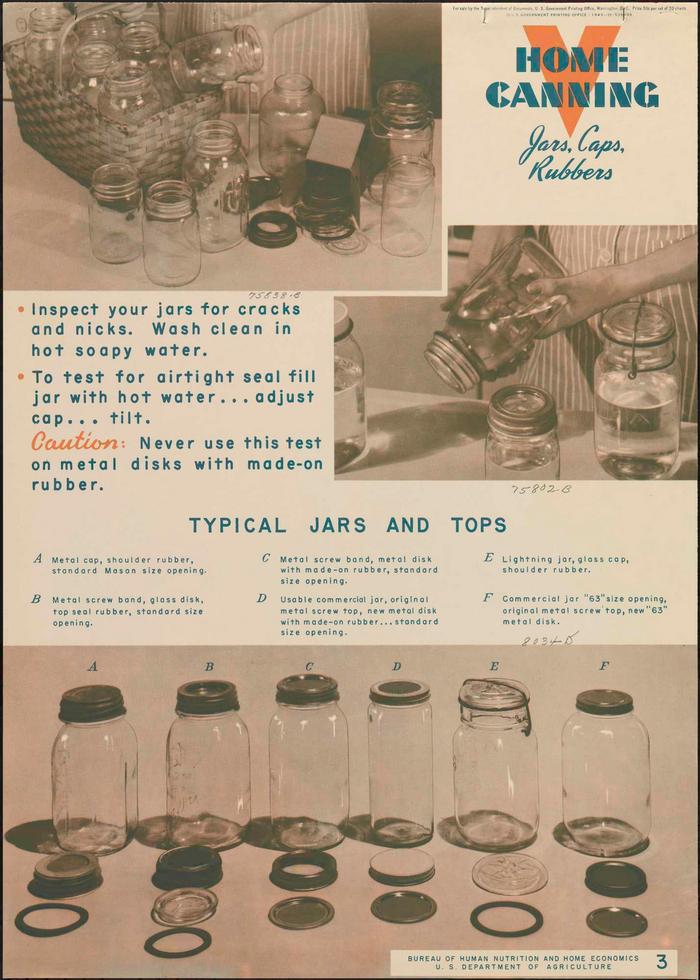
 8
8






Pecan Media: food forestry and forest garden ebooks
Now available: The Native Persimmon (centennial edition)
 2
2




 1
1




 1
1




Gail Jardin wrote:Here's my idea for the day. If some company runs with it please pass on a commission, lol. Making lightning jar metal brackets and glass lids for modern day canning jars. I know tattler lids can be reused but I think some folks like myself would prefer to steer away from plastics. I would love to have lids that could be reused for years to come!
Pecan Media: food forestry and forest garden ebooks
Now available: The Native Persimmon (centennial edition)
 1
1




Larisa Walk wrote:Thanks for posting this. I've talked about these different jar types in my food preservation workshops but it's so nice to have a picture. These jars work like the Weck brand in that the seal is "completed" when the jars come out of the canner (the lid is tightened or the wire bail is snapped down, etc.) BTW, I grew up using the zinc lids and rubbers as posted in "A" and only quit canning with them about 35 years ago. I still have my stash of old jars and use the blue ones for storing dried foods. The rubbers do get brittle over time as they are a natural rubber. But if used for dry storage rather than running through the canner, they last for decades.
Pecan Media: food forestry and forest garden ebooks
Now available: The Native Persimmon (centennial edition)




Dan Boone wrote:
Gail Jardin wrote:Here's my idea for the day. If some company runs with it please pass on a commission, lol. Making lightning jar metal brackets and glass lids for modern day canning jars. I know tattler lids can be reused but I think some folks like myself would prefer to steer away from plastics. I would love to have lids that could be reused for years to come!
Gail, I have a number of the lightning jars where the galvanized steel wire is missing or extremely rusty/corroded and ugly. I have given a lot of thought to trying to figure out how to manufacture them from stainless steel wire. It's not so very difficult if I made a set of jigs (frames to help with precise wire bending). The trouble is, there's not much standardization in the lightning jars, or perhaps another way of putting it is, there are many MANY types and sizes with no easy way to describe the wire fasteners that each jar needs. So there's no obvious way to make a business doing this; you'd pretty much have to do custom work for each jar or set of jars, which means having your hands on them. I can't imagine folks want this badly enough to pay to have their jars shipped off to a specialty shop, then for custom labor, then have them shipped back. And I just can't see how to standardize things enough that you could just sell new wire bales on Amazon or wherever via mail order -- people would forever be ordering the wrong ones that don't fit, and getting mad.




Gail Jardin wrote:
Hmm, I just meant to transform the typical two piece ball and kerr wide and narrow mouth jars to have this type of latch and glass lid. Ball and Kerr have the monopoly on jars and they only have two size lids. So it would really only be two types of lids that would need to be made. Sorry for not explaining my idea thoroughly.
Pecan Media: food forestry and forest garden ebooks
Now available: The Native Persimmon (centennial edition)




 3
3




 1
1




Dan Boone wrote:
I can't quite visualize the type of lids you have in mind, though. All the wire-bail type jars I've seen have anchored the bail in some molded glass dimples on the shoulder of the jar. I am not sure how the bail would work or what it would clamp to, if we tried to design a bail-type closure for a standard modern canning jar. Maybe there could be some kind of removable clamp that secures around the neck of the jar, with the bail-anchoring-divots in that?

|
There's just something sexy about this tiny ad
Support permies and give beautiful gifts to gardeners: permaculture playing cards.
https://gardener-gift.com/
|







